Archaeologists working in Luxor have uncovered a magnificent statue of King Amenhotep III of ancient Egypt and several other statues and statue parts of the cat goddess Sekhmet meant to protect him.
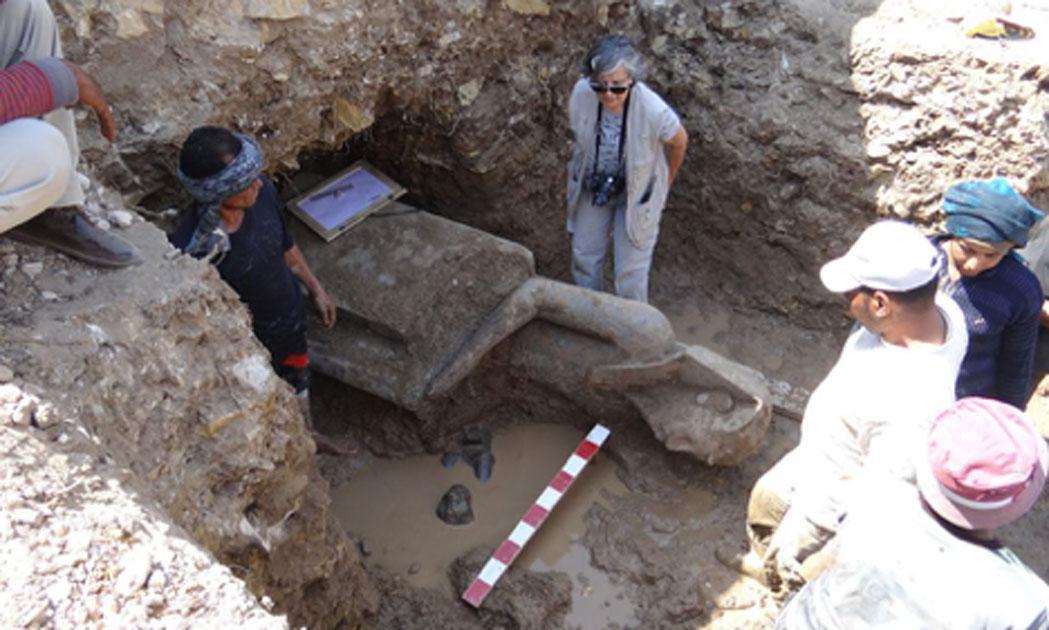
The project of excavating the temple by the Colossi of Memnon and Amenhotep III Temple Conservation Project has been underway for many years. Over time, rising Nile waters, pillaging, and a powerful earthquake contributed to the temple’s ruin.
The statue of Amenhotep III is in black granite and shows him seated on his throne. It is 248 centimeters (8.14 feet) tall, 61 cm (2 feet) wide, and 110 cm (3.6 feet) deep, according to an article about the find in Ahram Online that quoted project director Hourig Sourouzian.
“It is a masterpiece of ancient Egyptian sculpture: extremely well carved and perfectly polished,” Ahram Online quoted Sourouzian as saying. She added that the king’s facial features look quite juvenile, meaning that perhaps the statue was carved in his earliest years as Egypt’s ruler.
The team found a similar sculpture of Amenhotep III in 2009. That statue is on display in the Luxor Museum of Ancient Egyptian Art. Someday it will be returned to stand in Amenhotep’s restored funerary temple in its original position, as will this latest find.
The head of Egypt’s Ministry of Antiquities, Mahmoud Afifi, said 66 statue parts of Sekhmet have also been unearthed this archaeological season. In some, the goddess is standing and holding paprus scepters or ankh, the symbol of life. The head of the lion goddess is preserved on many of the statues. Others are in various pieces, including heads, busts, and other parts.
The Sekhmet statues were discovered in the area between the temple’s Peristyle Court and the Hypostyle Hall. Archaeologists have been excavating the areas in an attempt to find the wall that separated the court from the hall. The discovery of the statues is expected to increase knowledge of how the temple was laid out.
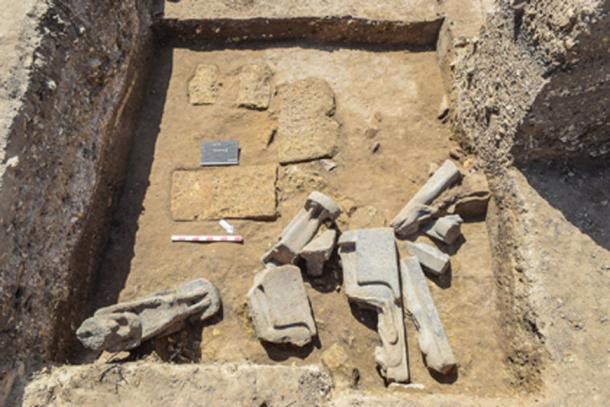
Some of the statues of Sekhmet as they were unearthed in situ (Ministry of Antiquities).
The temple was heavily damaged by a powerful earthquake in 27 BC that knocked over the walls and the columns that held them up. The lion-headed goddess statues had survived extensively during the Ramesside Period, Sourouzian told Ahram Online. She said the statues are of great interest to researchers. Conservationists intend to put all the statues of the goddess back in their original positions when the project is completed.
Sekhmet’s name is derived from the word sekhem, which means might. One of her myths was that she protects the sun god from his enemies. Amenhotep had hundreds of sculptures of Sekhmet made for temples built in Thebes during his reign, which lasted from about 1386 BC to 1349 BC. He was 50 years old when he died.
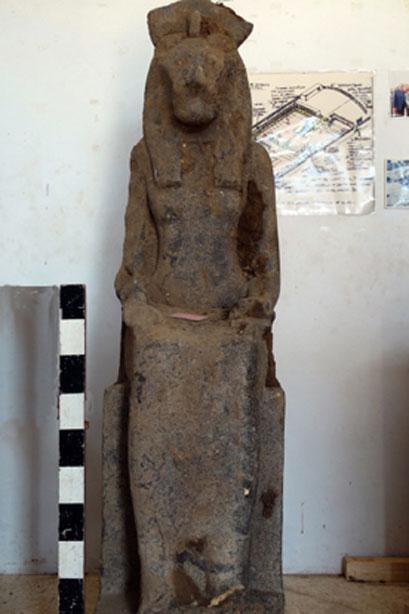
One of the better-preserved statues of Sekhmet, the cat goddess meant to protect Amenhotep III, was discovered in the “temple for millions of years.” The large number of Sekhmet statues were meant to protect the king from evil and prevent diseases. The World Monuments Fund has an article about Amenhotep III and his works that states:
“Amenhotep III is entombed inside the limestone hills of the Theban Necropolis, a sprawling cemetery on the banks of the Nile River opposite modern-day Luxor, where pharaohs and their queens, priests, and royal scribes were buried between the sixteenth and eleventh centuries B.C. Amenhotep III ruled Egypt for nearly four decades, until his death in 1349 B.C. at the age of 50. His reign was marked by prosperity, political stability, and the creation of some of ancient Egypt’s most magnificent complexes. His legacy includes an elaborate mortuary temple intended for rituals and offerings to honor the pharaoh in perpetuity.”
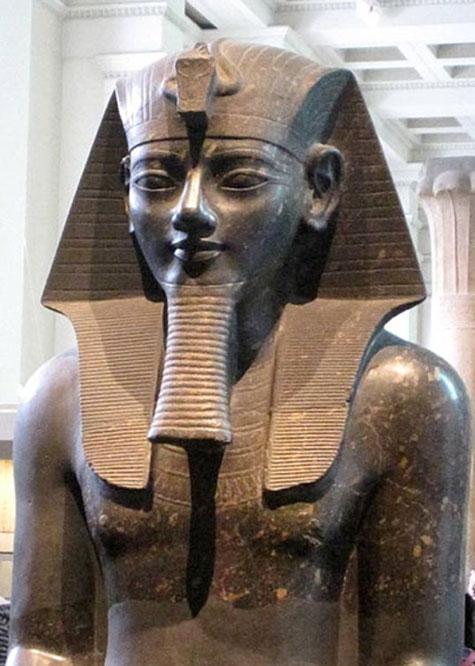
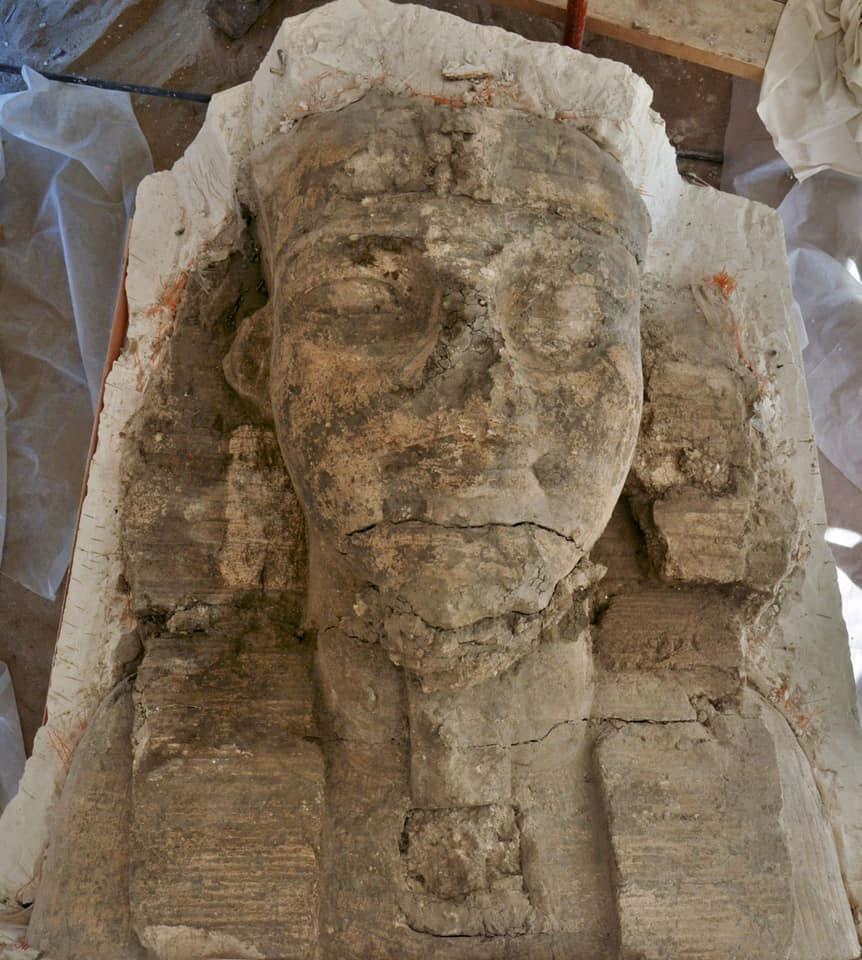
A colossal statue of Amenhotep III resides in the British Museum. Unfortunately, the king built his funerary temple too close to the Nile River, and it was submerged by river water. Pillaging by humans further damaged the buildings and statues. The earthquake damaged it even more. Nevertheless, archaeologists have been working to salvage what they can and intend to rebuild and conserve the monumental temple.
Top Image: The statue of King Amenhotep III in the ruins of his temple in Luxor (Ministry of Antiquities)




